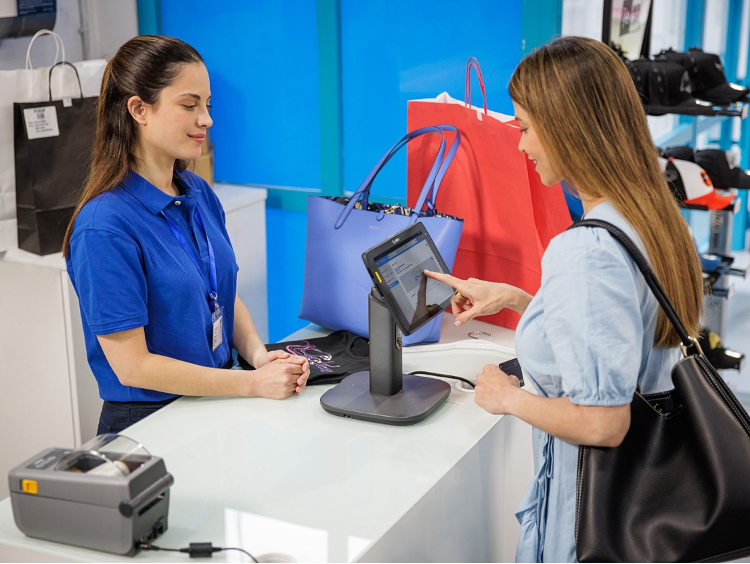
In our digital society, some may wear their growing collection of devices and apps as a badge of honor. But research increasingly shows that technology overload can take a toll on mental health and, paradoxically, reduce productivity, especially for frontline workers.
The solution lies in choosing technology that consolidates utility on a single platform. By reducing the number of tools connected frontline workers need, businesses can improve asset visibility, enhance intelligent automation, and increase staff capacity to manage surges in customer demand.
Why less technology can be more impactful
Ask any deskless worker what would make their job easier, and the likely answer is “technology.” Yet, the request isn’t for more devices or apps, it’s for tools that are tailored to the realities of their work. According to Zebra’s latest Global Shopper Study, retail associates report frustration when shoppers, armed with more advanced tools, can get answers faster than they can.
“More technology” doesn’t necessarily mean more devices. It could mean a single mobile device with an app that delivers everything an associate needs, or a network of systems, like RFID-based inventory tracking or AI-powered computer vision, that feed relevant information to that device, improving visibility and awareness.
In Vietnam, total retail sales of consumer goods and services rose 9% year-on-year to over VND6.4 quadrillion ($252 billion) in 2024, according to the General Statistics Office. As the sector expands, retailers are accelerating digital transformation, embracing data-driven strategies, and diversifying sales channels. Zebra’s study found that nearly 90% of retail associates believe mobile technology helps them provide better customer experiences by simplifying real-time communication, prioritizing tasks, and checking inventory. Most retailers agree, with 79% of APAC retailers planning to increase technology investments in 2025.
The goal is not to limit technology entirely but to reduce duplication. Do store associates, nurses, or warehouse teams really need two separate communications apps? Probably not. Before investing, businesses should assess what capabilities their teams truly need—intelligent automation, asset visibility, communication, collaboration, task management, and customer inquiries—rather than simply counting devices or apps.
Once the necessary capabilities are clear, organizations can search for a “multitool” solution. If a single tool cannot deliver everything, two or three may be needed, but avoid buying multiple apps that overlap in function. Prioritize quality, usability, and functionality.

Avoid thinking "any technology" will do
If you have only one mobile device meant to do it all, make sure it can handle everything you need, not just today, but a year from now. The same goes for software. If your goal is to find one or two apps that can multitask, ensure they can scale as required, especially when supporting frontline work. Also, confirm that the user experience remains consistent as new features are added or the software evolves, and that it feels familiar from the start.
It doesn’t help anyone if frontline workers are constantly in technology training mode. We all use mobile devices in our daily lives; there’s no reason their work mobility experience should feel different from personal use.
That said, consumer technologies don’t always translate well to professional settings, particularly on the frontline. Aim for similarity rather than identical experiences. Don’t get swept up in the hype around trending tech, research its value carefully. Often, the more reliable choice is the “safe” option: devices and software that have consistently proven to be scalable, affordable, easy to use, and dependable. Make an unbiased decision that isn’t based solely on buzzwords or budget. And always confirm that the devices and software you plan to use on the frontline integrate smoothly with back-office systems.
Avoid remodeling someone else’s house without talking to them first
When new mobile devices or software apps fail to improve frontline productivity as expected, it’s often because the workers themselves weren’t consulted before the purchase. In many cases, IT or operations teams evaluate technology options and make decisions without asking the end users, the very people the technology is intended to help.
I’ve also seen operations teams drive technology changes because they need certain tools, but fail to consult IT before purchase. The IT team is then left responsible for getting the technology online and keeping it operational for frontline teams.
So, when you think you’ve found “the one” mobile device and app that checks all the boxes and offers the right utility, make sure the people who will use it every day agree.








 Google translate
Google translate